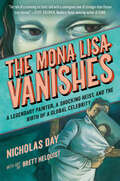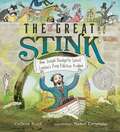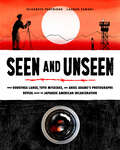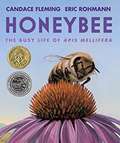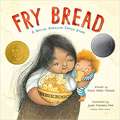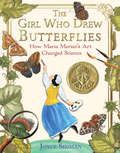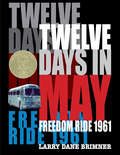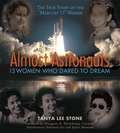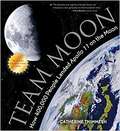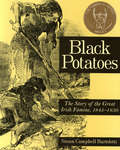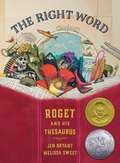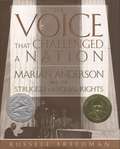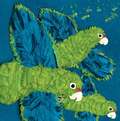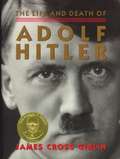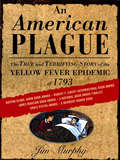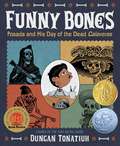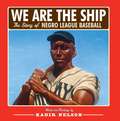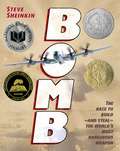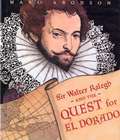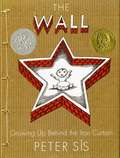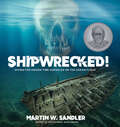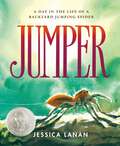Special Collections
Robert F. Sibert Informational Book Medal Winners
Description: The Robert F. Sibert Informational Book Medal is awarded annually to the author(s) and illustrator(s) of the most distinguished informational book published in the United States in English during the preceding year. #award
- Table View
- List View
The Mona Lisa Vanishes
by Nicholas DayOn a hot August day in Paris, just over a century ago, a desperate guard burst into the office of the director of the Louvre and shouted, La Joconde, c’est partie! The Mona Lisa, she’s gone!
No one knew who was behind the heist. Was it an international gang of thieves? Was it an art-hungry American millionaire? Was it the young Spanish painter Pablo Picasso, who was about to remake the very art of painting?
Travel back to an extraordinary period of revolutionary change: turn-of-the-century Paris. Walk its backstreets. Meet the infamous thieves—and detectives—of the era. And then slip back further in time and follow Leonardo da Vinci, painter of the Mona Lisa, through his dazzling, wondrously weird life. Discover the secret at the heart of the Mona Lisa—the most famous painting in the world should never have existed at all.
Here is a middle-grade nonfiction, with black-and-white illustrations by Brett Helquist throughout, written at the pace of a thriller, shot through with stories of crime and celebrity, genius and beauty.
The Great Stink How Joseph Bazalgette Solved London's Poop Pollution Problem
by Colleen PaeffIt's the summer of 1858, and London's River Thames STINKS. What is creating this revolting smell? The answer is gross: the river is full of poop. But the smell isn't the worst problem. Every few years, cholera breaks out, and thousands of people die. Could there be a connection between the foul water and the deadly disease? One engineer dreams of making London a cleaner, healthier place. His name is Joseph Bazalgette. His grand plan to create a new sewer system to clean the river is an engineering marvel. And his sewers will save lives. Nothing stinky about that.
Seen and Unseen
by Elizabeth PartridgeThis important work of nonfiction features powerful images of the Japanese American incarceration captured by three photographers—Dorothea Lange, Toyo Miyatake, and Ansel Adams—along with firsthand accounts of this grave moment in history.
Three months after Japan attacked Pearl Harbor in 1941, US President Franklin D. Roosevelt ordered the incarceration of all Japanese and Japanese Americans living on the West Coast of the United States. Families, teachers, farm workers—all were ordered to leave behind their homes, their businesses, and everything they owned. Japanese and Japanese Americans were forced to live under hostile conditions in incarceration camps, their futures uncertain.
Three photographers set out to document life at Manzanar, an incarceration camp in the California desert: Dorothea Lange was a photographer from San Francisco best known for her haunting Depression-era images. Dorothea was hired by the US government to record the conditions of the camps. Deeply critical of the policy, she wanted her photos to shed light on the harsh reality of incarceration.
Toyo Miyatake was a Japanese-born, Los Angeles–based photographer who lent his artistic eye to portraying dancers, athletes, and events in the Japanese community. Imprisoned at Manzanar, he devised a way to smuggle in photographic equipment, determined to show what was really going on inside the barbed-wire confines of the camp.
Ansel Adams was an acclaimed landscape photographer and environmentalist. Hired by the director of Manzanar, Ansel hoped his carefully curated pictures would demonstrate to the rest of the United States the resilience of those in the camps.
In Seen and Unseen, Elizabeth Partridge and Lauren Tamaki weave together these photographers' images, firsthand accounts, and stunning original art to examine the history, heartbreak, and injustice of the Japanese American incarceration.
AWARENESS OF AMERICAN HISTORY: This impactful book engages with an underrepresented topic in American history, and highlights important and timely themes like primary sources, censorship, and visual literacy.
Honeybee The Busy Life of Apis Mellifera
by Candace FlemingThe life cycle of a honeybee is explained in this book.
Fry Bread
by Kevin Noble MaillardTold in lively and powerful verse by debut author Kevin Noble Maillard, Fry Bread is an evocative depiction of a modern Native American family, vibrantly illustrated by Pura Belpre Award winner and Caldecott Honoree Juana Martinez-Neal.
Fry bread is food. It is warm and delicious, piled high on a plate.
Fry bread is time. It brings families together for meals and new memories.
Fry bread is nation. It is shared by many, from coast to coast and beyond.
Fry bread is us. It is a celebration of old and new, traditional and modern, similarity and difference.
The Girl Who Drew Butterflies
by Joyce SidmanBugs, of all kinds, were considered to be “born of mud” and to be “beasts of the devil.” Why would anyone, let alone a girl, want to study and observe them?
One of the first naturalists to observe live insects directly, Maria Sibylla Merian was also one of the first to document the metamorphosis of the butterfly.
In this visual nonfiction biography, richly illustrated throughout with full-color original paintings by Merian herself, the Newbery Honor–winning author Joyce Sidman paints her own picture of one of the first female entomologists and a woman who flouted convention in the pursuit of knowledge and her passion for insects.
Twelve Days in May
by Larry Dane BrimnerOn May 4, 1961, a group of thirteen black and white civil rights activists launched the Freedom Ride, aiming to challenge the practice of segregation on buses and at bus terminal facilities in the South. The Ride would last twelve days. Despite the fact that segregation on buses crossing state lines was ruled unconstitutional by the Supreme Court in 1946, and segregation in interstate transportation facilities was ruled unconstitutional in 1960, these rulings were routinely ignored in the South. The thirteen Freedom Riders intended to test the laws and draw attention to the lack of enforcement with their peaceful protest. As the Riders traveled deeper into the South, they encountered increasing violence and opposition.
Noted civil rights author Larry Dane Brimner relies on archival documents and rarely seen images to tell the riveting story of the little-known first days of the Freedom Ride. With author’s note, source notes, bibliography, and index.
*Winner of the 2018 Robert F. Sibert Informational Book Award
Almost Astronauts
by Tanya Lee StoneNearly twenty years before the first women were allowed into NASA's astronaut program, a group of thirteen women proved not only that they were as tough as any man but also that they were brave enough to challenge the government. Almost Astronauts tells the story of the "Mercury 13" women, who were blocked by prejudice, jealousy, and a note scrawled by one of the most powerful men in Washington. In the end, the inspiring example of these space-age pioneers empowered young people to take their rightful place in the sky and beyond, piloting jets and commanding space capsules.
Winner of the Sibert Medal
Balloons over Broadway
by Melissa Sweet2012 Robert F. Sibert Medal Winner Winner of the 2012 NCTE Orbis Pictus Award Everyone's a New Yorker on Thanksgiving Day, when young and old rise early to see what giant new balloons will fill the skies for Macy's Thanksgiving Day Parade.
Who first invented these upside-down puppets? Meet Tony Sarg, puppeteer extraordinaire! In brilliant collage illustrations, the award-winning artist Melissa Sweet tells the story of the puppeteer Tony Sarg, capturing his genius, his dedication, his zest for play, and his long-lasting gift to America-the inspired helium balloons that would become the trademark of Macy's Parade.
Winner of the Sibert Medal
Team Moon
by Catherine ThimmeshFor the kids of all those thousands and thousands of people who worked on Apollo. For the sacrifices you made--the birthday parties, ballgames, and bedtime stories that your parents had to miss because the moon was calling, and demanding their time. It must have been hard sometimes. But look at what they did! Thanks for sharing them with the world when we needed them most.
Winner of the Sibert Medal
Black Potatoes
by Susan Campbell BartolettiIn 1845, a disaster struck Ireland. Overnight, a mysterious blight attacked the potato crops, turning the potatoes black and destroying the only real food of nearly six million people.
Over the next five years, the blight attacked again and again. These years are known today as the Great Irish Famine, a time when one million people died from starvation and disease and two million more fled their homeland.
Black Potatoes is the compelling story of men, women, and children who defied landlords and searched empty fields for scraps of harvested vegetables and edible weeds to eat, who walked several miles each day to hard-labor jobs for meager wages and to reach soup kitchens, and who committed crimes just to be sent to jail, where they were assured of a meal. It's the story of children and adults who suffered from starvation, disease, and the loss of family and friends, as well as those who died. Illustrated with black and white engravings, it's also the story of the heroes among the Irish people and how they held on to hope.
Winner of the Sibert Medal
The Right Word
by Jen Bryant and Melissa Sweet2015 Caldecott Honor Book
2015 Sibert Medal Winner
For shy young Peter Mark Roget, books were the best companions -- and it wasn't long before Peter began writing his own book. But he didn't write stories; he wrote lists. Peter took his love for words and turned it to organizing ideas and finding exactly the right word to express just what he thought. His lists grew and grew, eventually turning into one of the most important reference books of all time.
Readers of all ages will marvel at Roget's life, depicted through lyrical text and brilliantly detailed illustrations. This elegant book celebrates the joy of learning and the power of words.
The Voice That Challenged a Nation
by Russell Freedman"A voice like yours," celebrated conductor Arturo Toscanini told contralto Marian Anderson, "is heard once in a hundred years." This insightful account of the great African American vocalist considers her life and musical career in the context of the history of civil rights in this country. Drawing on Anderson's own writings and other contemporary accounts, Russell Freedman shows readers a singer pursuing her art despite the social constraints that limited the careers of black performers in the 1920s and 1930s. Though not a crusader or a spokesperson by nature, Marian Anderson came to stand for all black artists -- and for all Americans of color -- when, with the help of such prominent figures as Eleanor Roosevelt, she gave her landmark 1939 performance on the steps of the Lincoln Memorial, which signaled the end of segregation in the arts.
Carefully researched, expertly told, and profusely illustrated with contemporary photographs, this Newbery Honor and Sibert Medal-winning book is a moving account of the life of a talented and determined artist who left her mark on musical and social history. Through her story, Newbery Medal-winning author Russell Freedman, one of today's leading authors of nonfiction for young readers, illuminates the social and political climate of the day and an important chapter in American history. Notes, bibliography, discography, index.
Newbery Honor book and Winner of the Sibert Medal
Parrots Over Puerto Rico
by Susan L. Roth and Cindy TrumboreA picture book telling the intertwined histories of the Puerto Rican parrot and the island of Puerto Rico, culminating with current efforts to save the parrots from extinction. Puerto Rican parrots, once abundant, came perilously close to extinction in the 1960s due to centuries of foreign exploration and occupation, development, and habitat destruction. In this compelling book, Roth and Trumbore recount the efforts of the scientists of the Puerto Rican Parrot Recovery Program to save the parrots and ensure their future. Woven into the parrots' story is a brief history of Puerto Rico itself, from before the first human settlers to the present day.
Winner of the Sibert Medal
Winner of the 2018 Riverby Award
The Life and Death of Adolf Hitler
by James Cross GiblinThere are no memorials to Adolf Hitler in Germany, the country he ruled with an iron hand from 1933 to 1945. Nor do visitors flock to his grave, for no one knows where his remains are buried--or if they were buried at all. Perhaps his ashes, like his skull, remain locked away in an archive in Russia. Or perhaps they were scattered to the winds years ago at some unknown location in eastern Europe.
Winner of the Sibert Medal
Kakapo Rescue
by Sy MontgomeryOn remote Codfish Island off the southern coast of New Zealand live the last ninety-one kakapo parrots on earth. These trusting, flightless, and beautiful birds--the largest and most unusual parrots on earth--have suffered devastating population loss. As their habitat became invaded by predators introduced by humans, the kakapo population on mainland New Zealand decreased from uncounted millions in the mid-nineteenth century to near extinction by 1950. Now, isolated on an island refuge with the last of the species, New Zealand's National Kakapo Recovery Team is working to restore the kakapo population and protect it from exposure to anything that might threaten its fragile balance. No humans can visit the habitat on Codfish without first disinfecting all of their belongings and then flying across stormy seas to land on a tiny beach. On the island, there is plenty of hard work for everyone and every bird: special food to prepare and deliver, radio-wave tracking devices to install, live video to monitor, and, of course, precious baby kakapo to hatch and feed. With the help of fourteen humans who share a single hut and a passion for saving these odd ground dwelling birds, the kakapo are making a comeback in New Zealand. Follow intrepid animal lovers Sy Montgomery and Nic Bishop on a ten-day excursion to witness the exciting events in the life of the kakapo. By turns emotional, fascinating, dangerous, and hilarious, Montgomery and Bishop's sensitive and scientific chronicle explores all there is to know about these "winged weirdos."
Winner of the Sibert Medal
An American Plague
by Jim MurphyNational Book Award Finalist: An account of the disease that ravaged eighteenth-century Philadelphia, written and illustrated for young readers. 1793, Philadelphia: The nation&’s capital and the largest city in North America is devastated by an apparently incurable disease, cause unknown… This dramatic narrative describes the illness known as yellow fever and the toll it took on the city&’s residents, relating the epidemic to the social and political events of the day and eighteenth-century medical beliefs and practices. Drawing on first-hand accounts, Jim Murphy spotlights the heroic role of Philadelphia&’s free blacks in combating the disease, and the Constitutional crisis President Washington faced when he was forced to leave the city—and all his papers—to escape the deadly contagion. The search for the fever's causes and cure provides a suspenseful counterpoint to this riveting true story of a city under siege. Winner of multiple awards, this thoroughly researched book offers a look at the conditions of cities at the time of our nation&’s birth, and draws timely parallels to modern-day epidemics. &“A lavishly illustrated book, containing maps, newspaper columns and period illustrations…unflinchingly presents the horrors of the event as well as its heroes.&”—The New York Times &“Pair this work with Laurie Halse Anderson&’s wonderful novel Fever 1793 and you&’ll have students hooked on history.&”—School Library Journal &“History, science, politics, and public health come together in this dramatic account of the disastrous yellow fever epidemic that hit the nation&’s capital more than 200 years ago.&”—Booklist
Secrets of a Civil War Submarine
by Sally M. WalkerIt was an amazing Confederate victory! -- but at what cost? When the Confederate submarine, H. L. Hunley, disappeared shortly after sinking the Union's USS Housatonic, it was a historic event - the first time a submarine had sunk a ship in battle. Yet this victory came at a terrible price, the loss of the famous submarine and the crew inside it. For more than 130 years, the fate of the H. L. Hunley was one of the great-unsolved mysteries of the Civil War. Finally, in 1995, the submarine was found buried off the coast of South Carolina. Scientists flocked to the discovery, seeking to uncover the secrets of its terrible final voyage. Secrets of a Civil War Submarine takes readers on a fascinating journey that traces the creation and voyages of the Hunley as well as the obstacles overcome while recovering, excavating, and conserving this monumental discovery.
Winner of the Sibert Medal
Funny Bones
by Duncan Tonatiuh
Funny Bones tells the story of how the amusing calaveras--skeletons performing various everyday or festive activities--came to be.
They are the creation of Mexican artist José Guadalupe (Lupe) Posada (1852-1913).
In a country that was not known for freedom of speech, he first drew political cartoons, much to the amusement of the local population but not the politicians.
He continued to draw cartoons throughout much of his life, but he is best known today for his calavera drawings.
They have become synonymous with Mexico's Día de los Muertos (Day of the Dead) festival.
Juxtaposing his own art with that of Lupe's, author Duncan Tonatiuh brings to light the remarkable life and work of a man whose art is beloved by many but whose name has remained in obscurity. The book includes an author's note, bibliography, glossary, and index.
A 2016 Sibert Award Winner and Pura Belpré (Illustrator) Honor Book,
We Are the Ship
by Kadir Nelson"We are the ship; all else the sea"
--Rube Foster, founder of the Negro National League.
The story of Negro League baseball is the story of gifted athletes and determined owners; of racial discrimination and international sportsmanship; of fortunes won and lost; of triumphs and defeats on and off the field. Most of all, the story of the Negro Leagues is about the unsung heroes who overcame segregation, hatred, terrible conditions, and low pay to do the one thing they loved more than anything else in the world: play ball.
Using an "Everyman" player as his narrator, Kadir Nelson tells the story of Negro League baseball from its beginnings in the 1920s through its decline after Jackie Robinson crossed over to the majors in 1947. The voice is so authentic, you will feel as if you are sitting on dusty bleachers listening intently to the memories of a man who has known the great ballplayers of that time and shared their experiences. But what makes this book so outstanding are the dozens of oil paintings--breathtaking in their perspectives, rich in emotion, and created with understanding and affection for these lost heroes of our national game.
We Are the Ship is a tour de force for baseball lovers of all ages.
[This text is listed as an example that meets Common Core Standards in English language arts in grades 4-5 at http://www.corestandards.org.]
Winner of the Sibert Medal and the Coretta Scott King Medal
Bomb
by Steve SheinkinIn December of 1938, a chemist in a German laboratory made a shocking discovery: When placed next to radioactive material, a Uranium atom split in two. That simple discovery launched a scientific race that spanned 3 continents. In Great Britain and the United States, Soviet spies worked their way into the scientific community; in Norway, a commando force slipped behind enemy lines to attack German heavy-water manufacturing; and deep in the desert, one brilliant group of scientists was hidden away at a remote site at Los Alamos. This is the story of the plotting, the risk-taking, the deceit, and genius that created the world's most formidable weapon. This is the story of the atomic bomb.
Bomb is a 2012 National Book Awards finalist for Young People's Literature.
Bomb is a 2012 Washington Post Best Kids Books of the Year title.
Bomb is a 2013 Newbery Honor book.
Bomb is the 2013 Robert Sibert Information Book Medal winner.
Sir Walter Ralegh and the Quest for El Dorado
by Marc AronsonSir Walter Ralegh played the starring role in a life that was a series of romantic, almost-too-spectacular-to-be-true adventures. From the dazzling court of Queen Elizabeth to the dense jungles of South America, from daring sea raids to the epic struggle against the Spanish Armada, from his luminous historical writings to his intimate poetry, Ralegh left his mark on the age. His life was as dramatic and complex as a Shakespearean play.
Ralegh was a man of great contradictions: He participated in the massacre of Catholics in Ireland, yet later supported religious toleration; he was a calculating courtier resented by many, yet he spoke so eloquently for the rights of individuals that he became a popular hero. His quest to find the legendary city of El Dorado and the fate of the famous Lost Colony he had sponsored in the New World are representative of both the soaring hopes and nightmarish realities that Europeans brought with them across the seas.
In this extraordinarily well researched biography, Marc Aronson passionately reveals the charisma and bravery of a man whose personality could not have been better suited to his era, a time filled with political intrigue, fierce battles, and courageous souls questing after impossible dreams.
Winner of the Sibert Medal
The Wall
by Peter SísThrough journals, maps, and dreamscapes, Peter Sís shows what life was like for a child who loved to draw, proudly wore the red scarf of a Young Pioneer, stood guard at the giant statue of Stalin, and believed whatever he was told to believe. But adolescence brought questions. Cracks began to appear in the Iron Curtain, and news from the West slowly filtered into the country. Sís learned about beat poetry, rock 'n' roll, blue jeans, and Coca-Cola. He let his hair grow long, secretly read banned books, and joined a rock band. Then came the Prague Spring of 1968, and for a teenager who wanted to see the world and meet the Beatles, this was a magical time. It was short-lived, however, brought to a sudden and brutal end by the Soviet-led invasion. But this brief flowering had provided a glimpse of new possibilities- creativity could be discouraged but not easily killed. By joining memory and history, Sís takes us on his journey: from infant with paintbrush in hand to young man borne aloft by the wings of his art.
Winner of the Sibert Medal
Shipwrecked!
by Martin W. Sandlerrom National Book Award–winning author Martin W. Sandler, here is a fascinating look at what shipwrecks reveal about our world’s past—and how exploring them led to the development of a whole new field of science: marine archaeology.
Most of the world’s ocean floor remains to be discovered. In fact, it’s estimated to be home to over 3 million sunken vessels and countless treasures of the past. This enthralling and adventure-filled nonfiction book for young readers recounts some of the most captivating shipwrecks from history, ranging from the Shinan, a Chinese merchant ship laden with riches from the 14th century, to the HMS Erebus and Terror, two polar exploration ships that mysteriously disappeared in the early 1800s.
Combining new research, stunning archival material, and vivid storytelling, Shipwrecked! dives deep into the world of marine archaeology and shows young readers what each discovery reveals about the world before our time.
Jumper
by Jessica LananFrom critically acclaimed illustrator of The Lost Package comes a bold nonfiction story following a day in the life of a backyard jumping spider - meticulously researched and utterly charming.What if you were small as a bean,Could walk on the walls and ceiling,Sense vibrations through your elbows,And jump five times your body length?That is Jumper's world.Open this book to discover the vibrant, hidden life of a backyard jumping spider.
